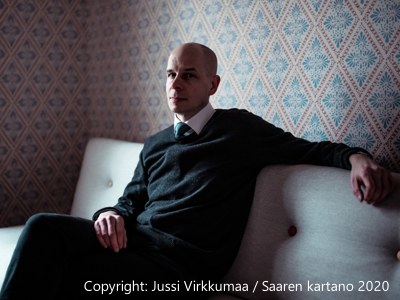Instrumentation:
Trumpet, Trombone, Percussion (2), Guitar, Violoncello, Piano
Duration: ca. 13′
Publisher: Schott Music
WP: 19.11.2014, Wien, Semperdepot (Festival Wien Modern)
Ensemble ascolta
Enno Poppe, conductor
GP: 22.5.2015, Rheinsberg (Pfingstwerkstatt), Ensemble ascolta/Steffen Tast
Further performances:
16.6.2015, Rottweil (Ars nova-Reihe des SWR), Ensemble ascolta/Hartmut Keil
8.11.2015, Stuttgart (Festival Lachenmann-Perspektiven), Ensemble ascolta/Steffen Tast
Radio broadcast:
14.10.2015, SWR
Commissioned by Ensemble ascolta as part of the project Gebrauchsanweisungen – Audiovisuelle Dialoge
Introduction
before I sleep was written as part of the project Gebrauchsanweisungen („instructions for use“) of the Ensemble ascolta, an audiovisual concept consisting of four compositions and four video works, during which the musicians of the ensemble made some specifications for the composition. Among those were associative hints (“sleep / dance” and “…descending a staircase…”), but also formal-structural instructions (one-piece form, inclusion of a duet within the ensemble, solo passages, working with extreme registers of the instruments).
before I sleep responds to these obstructions in a way that is both strict and subversive. My principle strategy in dealing with the “rules of the game” could be described as “undermining by overfulfillment”. Thus, the piece contains a prominent (though not virtuoso, but rather melancholic) solo part for trumpet and an extensive duo for trombone and piano. At the same time, any other possible duo arrangement of the ensemble is also presented at some point in the piece – usually obscured by overlaying several duets – and every other player sooner or later gets their solo. At the same time, the peculiar gesture of the trumpet solo influences the other parts; all the solo sections are rather moments of retreat for the soloists into a separated, „inner“ world than a prominent presentation of virtuosity.
I also approached the obstruction of “one-partness” in a roundabout way. It could be said that the impression of one-partness in the sense of a continuous flow of conciousness results from overlaying and obscuring of an indefinable number of sections – in a sense a technique of formal pointillism. The mobile form, consisting of a loop of five sections each of which can be the beginning of the piece, supports the idea of a one-part piece, because theoretically the form is infinite and nondirectional.
The way the pitch material is treated follows comparable principles. Starting from the association chain “descending a staircase → Devil’s Staircase → Devil’s Mill”, the entire pitch framework is based on an infinitely descending chord progression that always seems similar, but is never exactly the same and, comparable to an Escher drawing or a Möbius strip, whose bottom is at the same time its top. This corresponds to the general attitude of the piece with a gestural and tonal quality that alternates between dreamlike, somnambulistic and bizarre dance passages, whereby one should never really be able to distinguish between dancing in slow motion or dreaming in time-lapse: Tempo and rhythm are clearly inspired by cinematic approaches in dealing with time and the manipulation of their perception, up to moments with repetitive loops or “film stills”.
